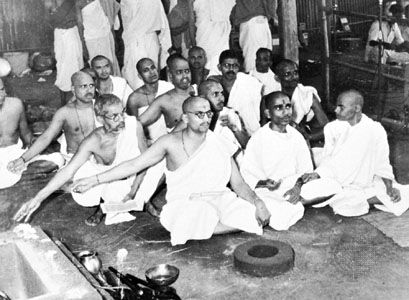soma
Our editors will review what you’ve submitted and determine whether to revise the article.
- Related Topics:
- soma sacrifice
soma, in ancient India, an unidentified plant the juice of which was a fundamental offering of the Vedic sacrifices. The stalks of the plant were pressed between stones, and the juice was filtered through sheep’s wool and then mixed with water and milk. After it was offered as a libation to the gods, the remainder of the soma was consumed by the priests and the sacrificer. It was highly valued for its exhilarating, probably hallucinogenic, effect. The personified deity Soma was the “master of plants,” the healer of disease, and the bestower of riches.
The soma cult exhibits a number of similarities to the corresponding haoma cult of the ancient Iranians and is suggestive of shared beliefs among the ancient Indo-Europeans in a kind of elixir of the gods. Like haoma, the soma plant grows in the mountains, but its true origin is believed to be heaven, whence it was brought to earth by an eagle. The pressing of soma was associated with the fertilizing rain, which makes possible all life and growth. In the post-Vedic classical period, soma is identified with the Moon, which wanes when soma is drunk by the gods but which is periodically reborn.













